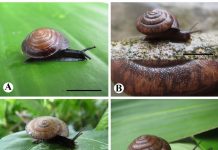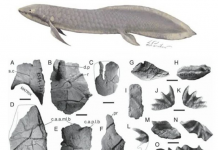How do you know what kind of poisonous mushrooms?
The Faculty of Science, MSU launches an innovative application for identifying different types of poisonous mushrooms on mobile phones named MUSHROOM IMAGE MATCHING
Today, many people are endangered by eating poisonous mushrooms due to the inaccurate knowledge, understanding and belief in identifying edible and poisonous species. Therefore, poisonous mushrooms that are similar to edible mushrooms are collected for cooking which may result in death.
In 2019, it is reported that 1,176 patients have been harmed by poisonous mushrooms from natural forests, and three deaths were reported. Poisonous mushroom samples from various provinces in Thailand including Chiang Mai, Chiang Rai, Nakhon Sawan, Phetchabun, Trang, Songkhla, Surat Thani, Krabi, Yala, Chaiyaphum, Ubon Ratchathani, Amnat Charoen and Sakon Nakhon were examined at the Department of Medical Sciences, Ministry of Public Health. The mushrooms that were reported included Inosperma cf. virosum (K.B. Vrinda, C.K. Pradeep, A.V. Joseph & T.K. Abraham ex C.K. Pradeep, K.B. Vrinda & Matheny) Matheny & Esteve-Rav., Russula subnigricans Hongo, Amanita exitialis Zhu L. Yang & T.H. Li, and Entoloma sp. These mushrooms have their appearance, or morphology, similar to edible mushrooms, which may mislead the villagers, causing them to be poisoned.
In February 2019, the Natural Medicinal Mushroom Museum, Faculty of Science, Mahasarakham University collaborated with the Department of Medical Sciences, Ministry of Public Health, to develop Mushroom Image Matching application by collecting 1,000 images of mushrooms, both poisonous mushrooms and edible mushrooms, stored in a database for processing by image recognition programs and displaying mushroom species with their names and the percentage of accuracy.
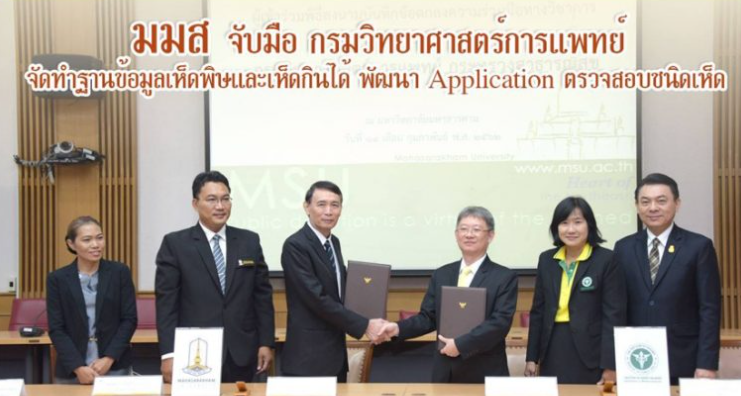
Its use is very easy, starting from downloading the application “คัดแยกเห็ดไทย“, which is only available on Android. Then, register and use it by opening the camera and scanning the desired mushroom. The program will start processing in real-time and will stop when the accuracy is 95 per cent. Also, we can press the button to stop manually. It is possible to identify the mushroom type from the photos stored on the mobile phone as well.
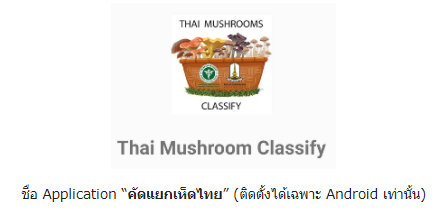
The current version of the application has a database of mushroom images to process in 14 groups, including 1. Russula spp., 2. Boletus spp., 3. Amanita exitialis Zhu L. Yang & T.H. Li, 4. Amanita spp., 5. Amanita vaginata (Bull.) Lam., 6. Inosperma cf. virosum (K.B. Vrinda, C.K. Pradeep, A.V. Joseph & T.K. Abraham ex C.K. Pradeep, K.B. Vrinda & Matheny) Matheny & Esteve-Rav., 7. Entoloma sp. 8. Termitomyces spp., 9. Chlorophyllum molybdites (G. Mey.) Massee, 10. Psathyrella candolleana (Fr.) Maire, 11. Coprinus quadrifidus Peck., 12. Russula adusta (Pers.) Fr., 13. Russula subnigricans Hongo, 14. Macrolepiota gracilenta (Krombh.) Wasser, (exploring and recording other groups of mushrooms will be implemented in the next phase of the project in 2020-2022). In addition to photo data, the database provides additional details of each mushroom such as its native name, the poison found in mushrooms, symptoms after exposure to such toxins, etc.
However, the Regional Medical Sciences Center 8, Udon Thani, who responsible for the project, believes that there should be a training to use this application directly to relevant personnel first in order to communicate and publicize to villagers and interested people to use it effectively. Therefore, the community public health officers were trained on how to use the application in 2019. In the past year, besides developing the app, we created a handbook to study the morphology of mushrooms, poisonous mushrooms, and surveillance for the benefit of preliminary mushroom characterization.
Anyway, there are some limitations to using this application. For example, the number of mushroom types in the database currently contains only 14 groups, while there are several kinds of mushrooms in nature. Sometimes the mushroom scanning and processing may be slow and not based on the particular mushroom group. Moreover, this application is just a tool to find out more information in the application to make sure about the edible mushroom and poisonous mushroom.
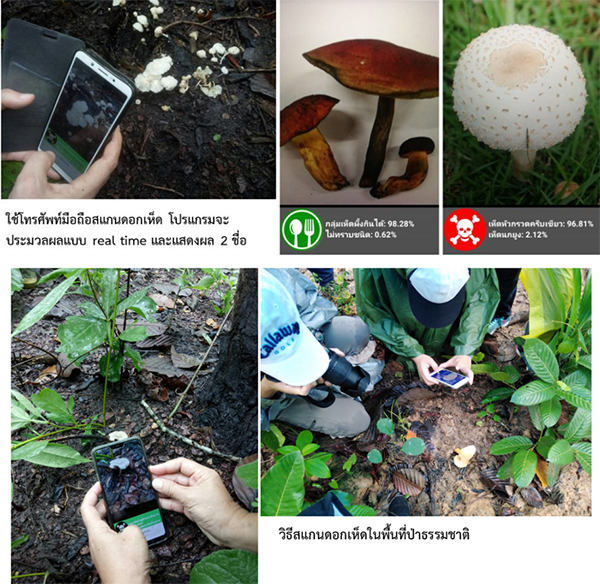
Cr. Assoc. Prof. Dr Khwanruan Naksuwankul, lecturer of the Faculty of Science, Mahasarakham University and member of the inventor team.




